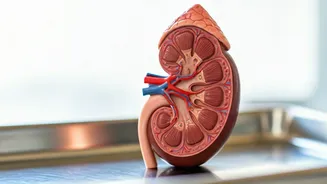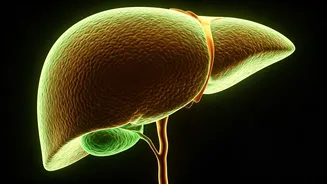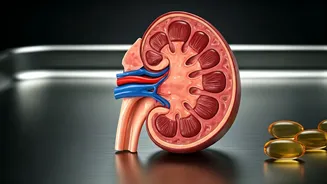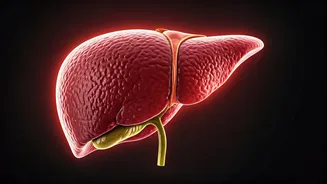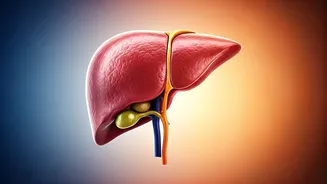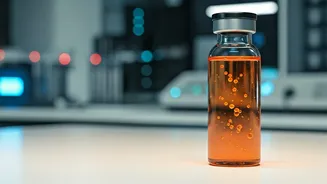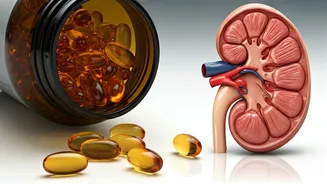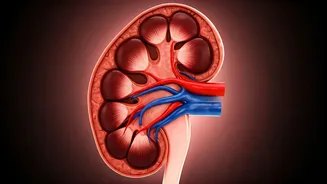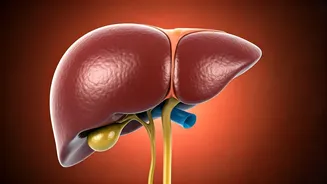Understanding Vitamin D
Vitamin D, often called the 'sunshine vitamin,' is crucial for various bodily functions. It aids in calcium absorption, bone health, and immune system
function. However, unlike other vitamins, the body can produce Vitamin D when the skin is exposed to sunlight. It's also found in some foods like fatty fish, egg yolks, and fortified products. The importance of Vitamin D is well-documented, but a common misconception is that more is always better. Overconsumption of Vitamin D can lead to a condition known as vitamin D toxicity, which requires prompt attention and management. It's vital to strike the right balance to support overall well-being.
Causes of Toxicity
Vitamin D toxicity, or hypervitaminosis D, typically results from excessive intake through supplements. While sun exposure is a natural source of Vitamin D, it rarely leads to toxicity because the body regulates its production. The primary cause is taking large doses of Vitamin D supplements without medical supervision or understanding of individual needs. This can happen when individuals mistakenly believe that taking more supplements will enhance health benefits. Moreover, improper storage can lead to degradation and altered potency. Another factor is the use of products with inaccurate dosages. It is also important to consider potential interactions with certain medications that may affect Vitamin D levels. This includes diuretics and corticosteroids, which can increase the risk of toxicity.
Recognizing the Symptoms
The symptoms of Vitamin D toxicity can vary, but some common signs should raise concerns. Early symptoms often include gastrointestinal issues, such as nausea, vomiting, and loss of appetite. These are often vague and can be easily overlooked. As the condition worsens, symptoms become more severe. Hypercalcemia, an abnormally high level of calcium in the blood, can develop due to Vitamin D's role in calcium absorption. This can cause bone pain, muscle weakness, and fatigue. Kidney problems can also arise, leading to increased thirst and frequent urination. In extreme cases, Vitamin D toxicity can lead to kidney failure. Being aware of these symptoms and seeking medical attention can help in preventing serious complications.
Diagnosis and Testing
Diagnosing Vitamin D toxicity involves a combination of medical history, physical examination, and specific blood tests. Doctors will first evaluate the patient's supplement intake and symptoms. A physical examination may look for signs of dehydration or other complications. The most critical diagnostic test is a blood test to measure the levels of Vitamin D and calcium. A Vitamin D level above the normal range (typically above 100 ng/mL) may indicate toxicity. Calcium levels are also measured as hypercalcemia is a common consequence. Other tests may be conducted to assess kidney function, such as a creatinine test and a blood urea nitrogen (BUN) test. These diagnostic steps are crucial for determining the severity of the condition and guiding the treatment plan.
Reversing the Effects
The treatment for Vitamin D toxicity primarily focuses on reducing the Vitamin D levels in the body and managing any resulting complications. The first step involves stopping all Vitamin D supplements immediately. In milder cases, this may be sufficient for the levels to return to normal. Patients are encouraged to consume adequate fluids to prevent dehydration caused by frequent urination. In more severe cases, medical intervention may be needed to lower calcium levels. Doctors may prescribe intravenous fluids to help flush out excess calcium and may also administer corticosteroids to decrease calcium absorption. In rare instances, medications like bisphosphonates can be used. It is important to emphasize that treatment is always under medical supervision to avoid further complications.
Natural Recovery Steps
In addition to medical treatments, several lifestyle adjustments can support natural recovery from Vitamin D toxicity. Staying well-hydrated is crucial as it helps the kidneys function properly. A diet low in calcium can help prevent further increases in blood calcium levels. Foods to limit include dairy products, calcium-fortified foods, and some types of nuts and seeds. Monitoring sun exposure is also important; avoiding excessive sunbathing can prevent the body from producing more Vitamin D. Regular follow-up with a healthcare provider is essential to monitor Vitamin D and calcium levels. These follow-ups help ensure a safe return to normal. By integrating these practices, individuals can complement their medical treatment and promote overall recovery.
Prevention Strategies
Preventing Vitamin D toxicity involves a combination of informed supplement use and lifestyle choices. Before starting any Vitamin D supplements, it’s advisable to consult with a healthcare provider. They can assess individual needs and recommend an appropriate dosage based on blood tests and overall health. Individuals must always adhere to the recommended dosages and never exceed them without medical advice. When choosing supplements, it's wise to select reputable brands and verify product labels for accurate dosages. Store supplements in a cool, dry place away from direct sunlight. Regularly check Vitamin D levels, especially if taking supplements, to monitor for any imbalance. By incorporating these strategies, individuals can proactively safeguard their health and prevent the adverse effects of Vitamin D toxicity.
